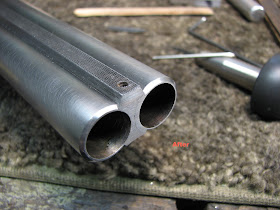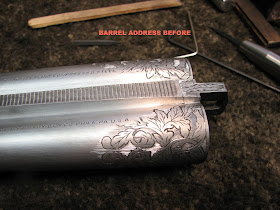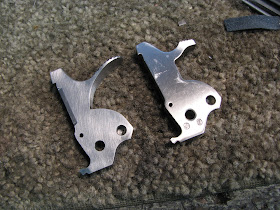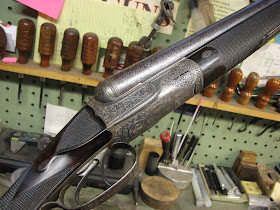The subject is a late Parker VH in 12 gauge, in very good mechanical condition but, for reasons unknown, its rim cuts were excessively deep. This situation in a shotgun isn't as potentially dangerous as it is in a rifle thanks to the shotgun's much lower operating pressure. It will, however, cause problems such as misfires because the shell's excess depth in the chamber effectively shortens the firing pins. Another potential problem is, if the shell were to fire, the primers could partially back out (by the amount of the excess headspace) with gas leakage between the primer cup and the primer pocket. In a shotgun, this gas leakage around the primer isn't really a danger but it's not going to do the face of the standing breech any favors. Look at many older doubles and you will, at some point, notice a ring of pitting around the firing pin holes, that just happens to correspond to the diameter of the primer. This is caused by just such gas leakage.
Here I will detail the method for correcting this situation.
The chambers, as the gun came in, with the rims cut approximately .040" too deep:
The first operation is to cut the rims even deeper. The reason for this will become apparent as we go on.
With the rim cuts deepened, the next step is to turn rings to fit snugly into the rim bores.
You'll notice the bevels on each of the rings. They correspond to the 55 degree angle of the rim cut for 100 percent contact.
The rim bores and the outside of the rings are then tinned and all traces of acidic flux are neutralized and washed away. The mating surfaces are then painted with rosin before final soldering in place.
I turned a third ring (which was cut in half) to correct the extractor. These are silver brazed in place.
The new material is carefully filed to the original surfaces before cutting the new rim recesses. Here, the right chamber is done.
Here is the finished job.



































































